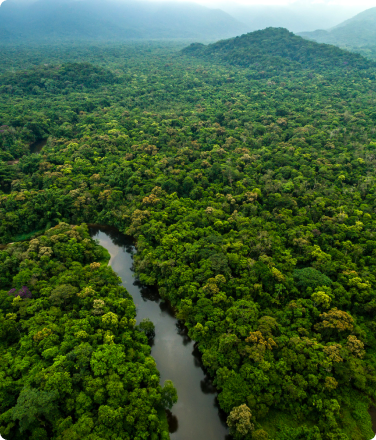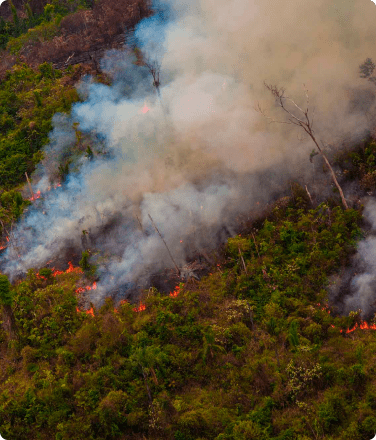- RFUS, Rainforest Trust and AIDESEP’s new project supports 41 Peruvian Indigenous communities in securing land rights in one of the Amazon’s most carbon-rich and biodiverse regions.
- Over two years, the project aims to title over 500,000 acres of Indigenous peoples’ ancestral lands—an area nearly three times the size of New York City.
- Located in northern Peru, this region holds exceptional environmental and social importance.
A new chapter in advancing Indigenous land rights is beginning in the Peruvian Amazon. With the support of Rainforest Trust, Rainforest Foundation US (RFUS) and the Interethnic Association for the Development of the Peruvian Amazon (AIDESEP), in partnership with the Regional Government of Loreto, have launched a two-year project to title and protect approximately 550,000 acres of rainforest in the Chambira-Marañón region of Loreto. That’s an area nearly three times the size of New York City. The goal is to secure land rights for around 41 Urarina Indigenous communities that have inhabited the Chambira and Marañón river valleys for centuries.
For the Indigenous communities of Chambira‑Marañón, this project is a historic milestone. For decades, we have protected our territories without the necessary legal backing, without legal security. Titling means securing our future, defending our forest, and keeping alive the relationship we have always had with our ancestral lands.
– Jorge Pérez Rubio, president of AIDESEP
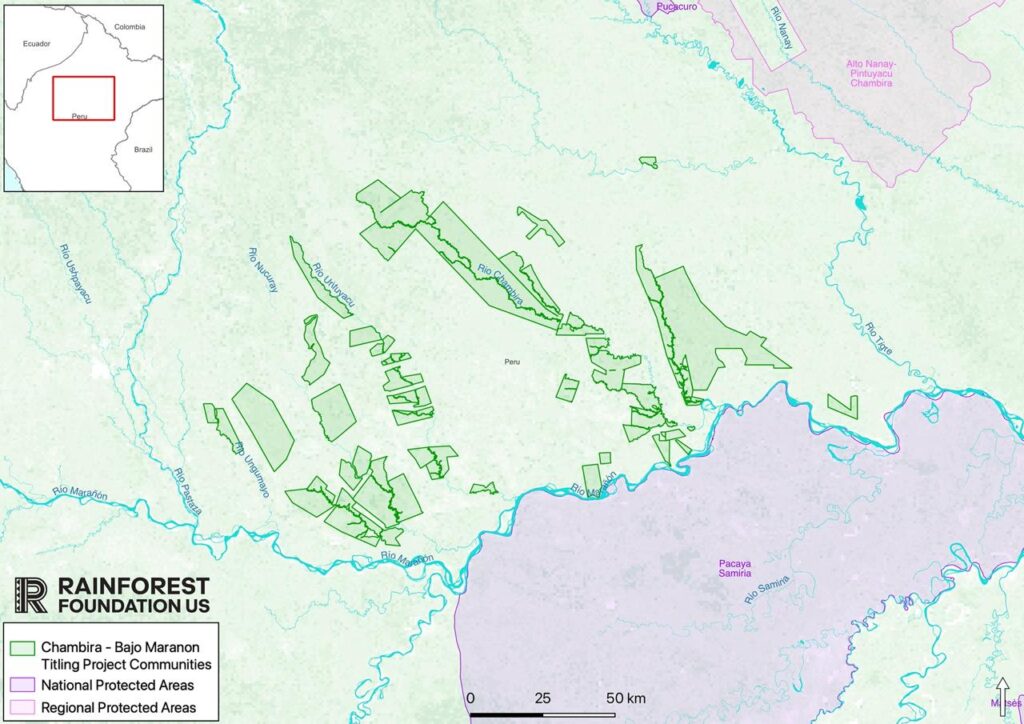
Located in northern Peru, this region holds exceptional environmental and social importance. With 90% forest cover and bordering the vast Pacaya-Samiria National Reserve, Loreto harbors some of the Amazon’s richest biodiversity and stores over half of Peru’s aboveground carbon.1 But this ecological richness is under mounting pressure. Illegal logging, oil extraction, coca cultivation, and organized crime are encroaching on Indigenous peoples’ lands and fragmenting ecosystems. In 2024, the situation worsened when Peru’s Congress passed legal reforms that weakened protections for Indigenous territories without legal recognition, paving the way for outside interests to seize Indigenous lands without community consent.2 Fortunately, the Regional Government of Loreto, in partnership with AIDESEP, has demonstrated that concrete efforts are being made to secure the land rights for Indigenous communities in the region.
Studies and RFUS’s on-the-ground experience show that securing Indigenous peoples’ land titles to their ancestral lands is one of the most powerful tools for defending their territories and ensuring long-term forest protection.3 The new project in Chambira-Marañón builds on a proven methodology that mobilizes specialized land titling teams of government technicians, experts, and community members, that conduct comprehensive fieldwork across multiple communities in a coordinated sweep. A key part of this approach is the early involvement of local Indigenous associations to proactively identify and map community boundaries. While these territories are well known to the communities themselves, they are often officially undocumented. Clearly delineating boundaries is essential to secure land titles and prevent future conflicts with neighboring communities or external interests. This process accelerates both field and desk-based processes, transforming a land titling process that has traditionally taken years. The project will also include a territorial monitoring component in its second year, using RFUS’s Rainforest Alert system to expand the communities’ ability to detect and respond to threats to their lands in real time.
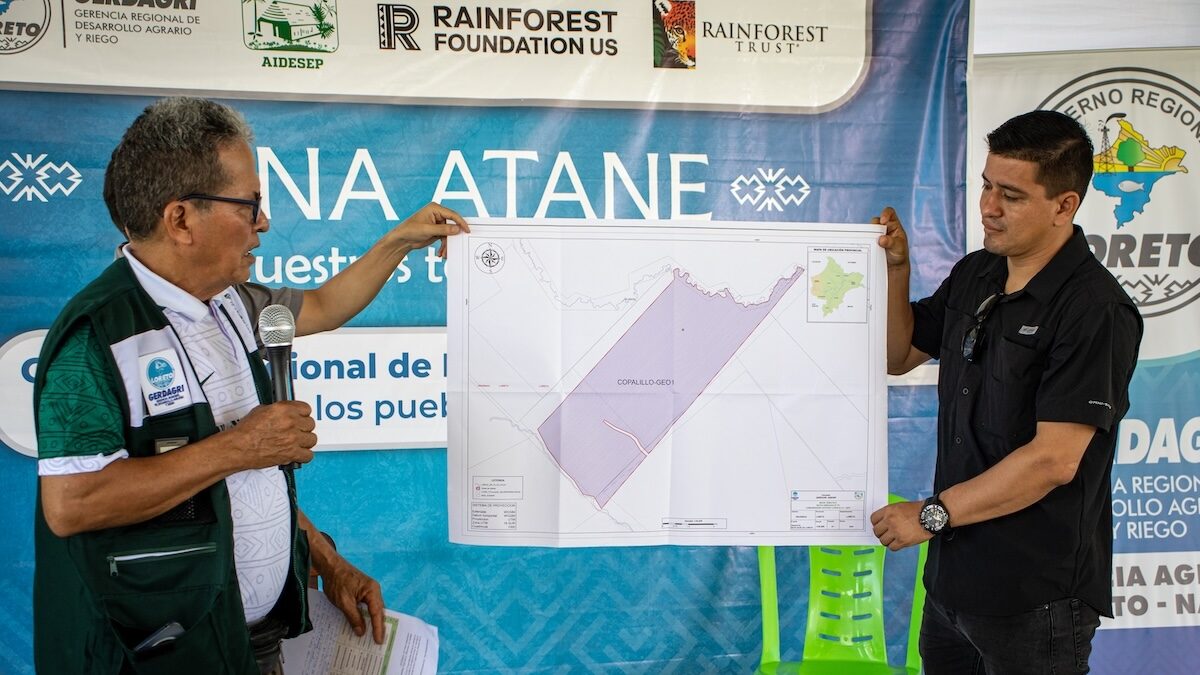
We are delighted to be working with RFUS and AIDESEP on this new initiative, which is an exciting addition to our community-focused land tenure efforts in the region over the last 20 years.
– James Lewis, Rainforest Trust’s Vice President of Conservation
Rainforest Trust’s support for this new phase builds on the solid track record of RFUS’s land titling work in Peru, which has already led to 37 Indigenous communities securing legal titles to nearly 178,000 acres of forest in just 10 months—a record-breaking pace under Peru’s typically slow bureaucratic system. The Chambira-Marañón project aligns with Rainforest Trust’s broader efforts to raise global support for the protection of tropical forests.
We’re proud to work alongside AIDESEP, the Regional Government of Loreto, and Rainforest Trust to meet the longstanding demands of Indigenous communities in Chambira-Marañón. Ensuring that these communities receive legal recognition of their ancestral lands is essential and only possible through strong, trusted partnerships that make fast, effective titling a reality.
– Gina Ruiz-Rothgiesser, Western Amazon Director at Rainforest Foundation US.
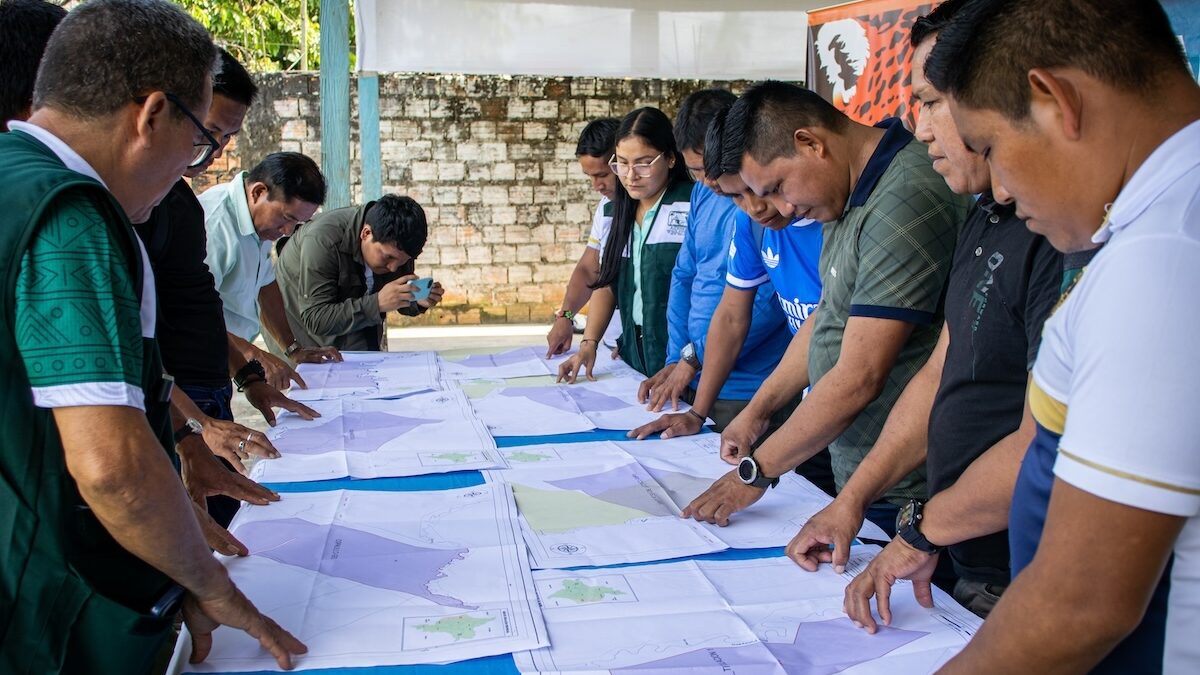
Fieldwork began in June, marking the start of a crucial effort to secure Indigenous land rights and safeguard one of the Amazon’s most vital regions for the climate, biodiversity, and cultural survival of communities that have stewarded these forests for generations. This is only the beginning.
This project has been supported by Rainforest Trust.

Sources:
- “Three legal jurisdictions in Peru store more than 78% (5.424 Pg) of country’s total aboveground carbon stocks, with Loreto sheltering 3.613 Pg (52.1%), Ucayali 0.99 Pg (14.2%), and Madre de Dios with 0.82 Pg (11.8%).” Csillik, O., Kumar, P., Mascaro, J. et al. Monitoring tropical forest carbon stocks and emissions using Planet satellite data. Sci Rep 9, 17831 (2019). https://doi.org/10.1038/s41598-019-54386-6 ↩︎
- Amendment to Peru law raises fears of Amazon rainforest destruction. Associated Press. April 15, 2025. ↩︎
- Walker, W. S., Gorelik, S. R., Baccini, A., Aragon-Osejo, J. L., Josse, C., Meyer, C., Macedo, M. N., Augusto, C., Rios, S., Katan, T., & others. (2020). The role of forest conversion, degradation, and disturbance in the carbon dynamics of Amazon indigenous territories and protected areas. Proceedings of the National Academy of Sciences, 117(6), 3015–3025. https://doi.org/10.1073/pnas.1917874117 ↩︎


